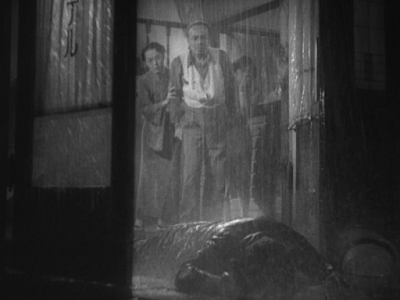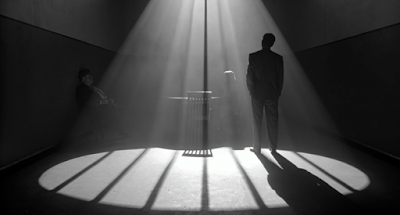Remembering Color Film Noir
Sounds like a contradiction in terms, doesn’t it? There are those who have deep reservations about applying the noir label to any film not shot in black and white. In the age of color film, the high-contrast black and white of classic film noir has something to teach every filmmaker. In purely visual terms, film noir inhabits a landscape of shadows and high contrast photography. Effects such as those are much more difficult to achieve when shooting on color stock, although it’s certainly not impossible.
Some call it a genre, others a movement, or even a fashion statement, but however one defines noir, with its signature femmes fatales, wisecracking tough guys, and dramatic, high-contrast cinematography, its appeal never seems to wane. Though its origins are in German expressionism and French crime films of the thirties, film noir has always been a distinctly American film movement, influenced and shaped as it was by American pulp fiction, wartime gender politics, and postwar nuclear anxieties. And since its forties and fifties heyday, the legacy of noir has spread everywhere—from Kurosawa (High and Low) to the French new wave (Alphaville) to the proliferation of “neonoirs” in the eighties (Coup de torchon) and nineties (Insomnia). Color may have seeped into noir’s rich gray palette over the years, but some things never change: anxiety, disillusionment, panic.
Over the years, Film Noir happened to change from just black and white to color palette based grading and lighting. In an era where common people are aware of technical details happening behind the screen, it is essential for every aspiring cinematographer to know about this.
Film Noir is the visual style used in classical gangster movies. It imparts a dark mood and uses a lot of contrasting light and shadow to create a strong, graphic look. The subject tends to be dark, contrasting - mostly monochromatic - with little grey area. The emotional tone presents a world where the actions are clear but their reason is in mystery. Usually light and shadow is used to differentiate characters and background and to create a dimension. Film Noir often turns this concept around and uses light to accentuate the darkness. It is a visual portrayal where the good is being separated from evil.
Most film noirs were B-pictures, small morality tales that showed what would happen if good men gave in to the temptation of crime and easy money. And that’s what the cinematography of film noir shows — the dark, gritty, and often deceiving visuals are a reflection of the characters, who themselves are dark, gritty, and deceiving. In noir, the cinematography is the main way to tell us about these people and the world they inhabit.
One of the most striking examples of pure noir cinematography can be seen in The Third Man (1949), directed by Carol Reed, shot by Robert Krasker. Krasker used single, large key lights with little or no fill light, giving the streets in the post-war city of Vienna a nightmarish feel. This style was common in noirs, especially during chase scenes, as the lights would cast long shadows, increasing energy and movement in the shots.
Post 1960s, the concept of Film Noir happened to change. A different perspective of film noir was showcased in movies which had a slight glossy look to it with minimal amount of colors. But these movies failed to create an impact because of the color imbalance in the output. Also, the color palette was quite confusing which did not have a connect with the viewers.
Film Noir, though used under this name in 1940s, has been in practice for a very long time. Artists and their paintings had shades of Film Noir technique which gave a lot of depth to their works. One popular work is the famous painting, The Scream by Edvard Munch. Even during the 60s there had been a number of films - some of which Silver and Ward group with canonical film noir, some with neo-noir that drew on the films and novels of earlier decades, and by the early 70s the phenomenon was attracting considerable critical attention.
Of late, Film Noir is back in movies, unfortunately without much knowledge. We live in a time where viewers are well aware of what happens in the pre and post production of a movie. And big cinematographers are slowly turning towards lighting scenes of a movie according to a color palette. They follow a particular color palette with sharp contrasts which uplifts the mood of the movie to a greater extent. Film makers like Hitchcock are inspiring a large crowd of film makers which has indirectly brought FIlm Noir back to the Forte. Movies like Dark Knight, Momento, Jil Jung Juk are few examples which followed Color Film Noir from start to end.
Celebrated Cinematographer John Alton once said, " It's not about what you light, it's about what you don't light. " For Cinematographers, it is essential to know that lights are to be used for cutting lights too, not just adding exposure. Film Noir, as a genre now, is slowly moving towards being a movement of late, with many cinematographers experimenting with crazy and creative color palettes.





Comments
Post a Comment